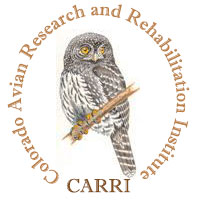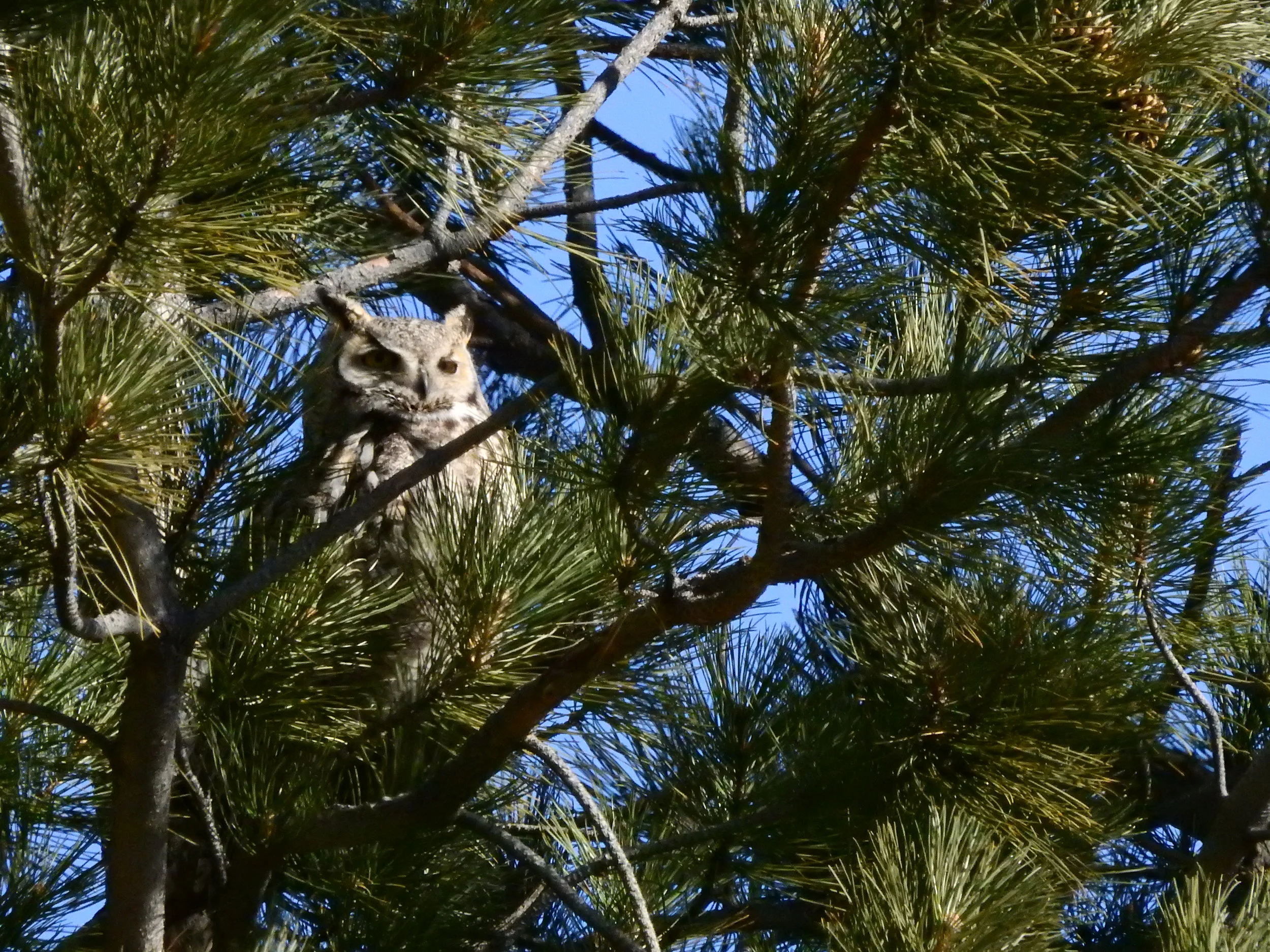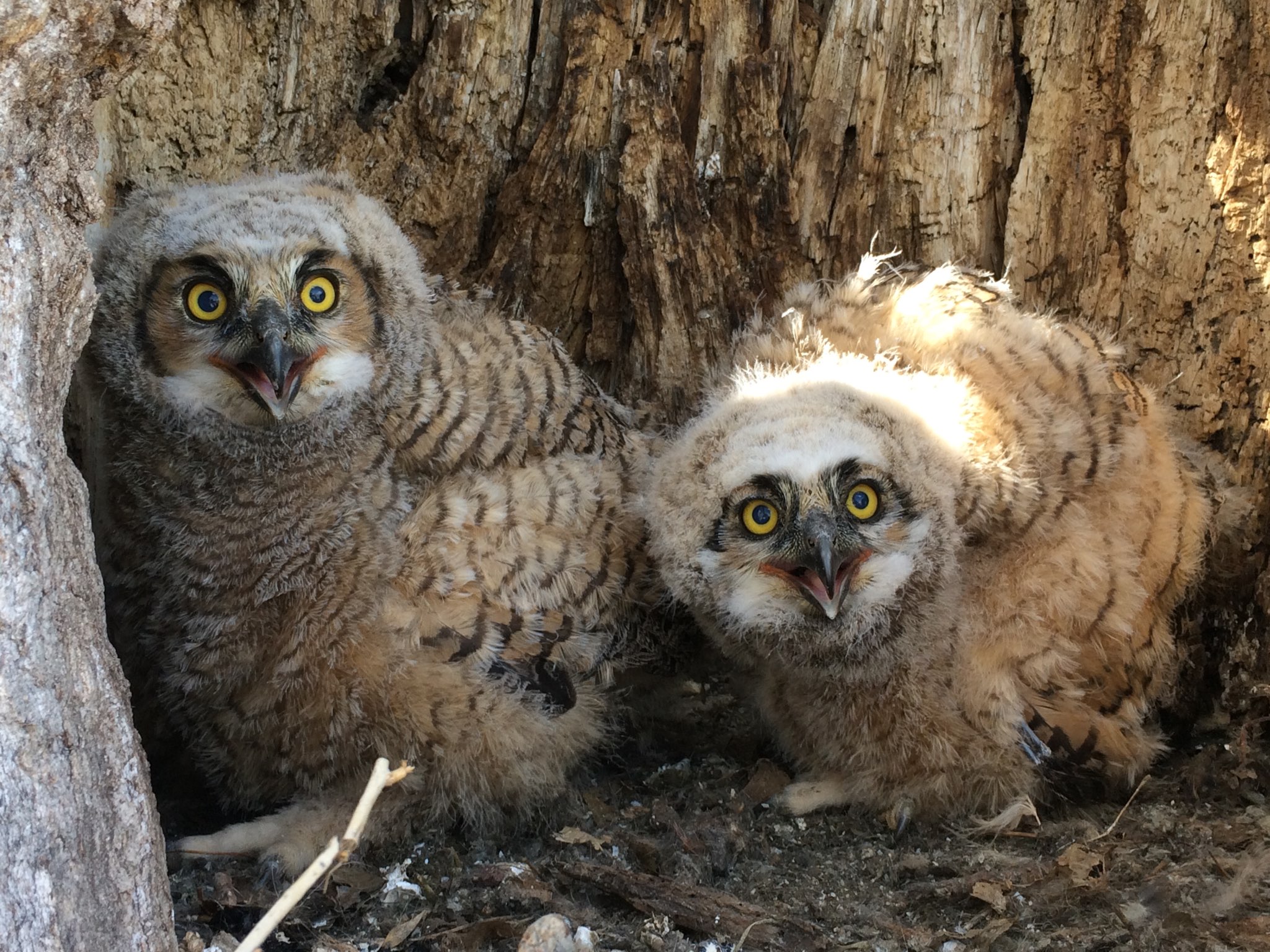This Great Horned Owl nest is in Louisville, Colorado. The pair are nesting in this cottonwood tree.
in 2019, the adult owls fed their owlets a wide variety of prey including rabbits, voles, mice, and birds.
Since January 1st 2021, a pair of Owls have been investigating this nest box. Hopefully, they will acccept it and nest here this winter.
Throughout Northern Colorado, members of CARRI have monitored several Great Horned Owl nests. We have found Great Horned Owls nesting in broken off Cottonwood limbs (such as the one below), cliff ledges, squirrel nests, witches brooms, crow, magpie and raven nests, Red-tailed Hawk nests and even Great Blue Heron nests (while the herons are nests right beside to them).
In and around Estes Park (where CARRI is headquartered), Great Horned Owls feed upon rabbits and hares, ground squirrels, fish, game birds, songbirds and other birds of prey and even domestic fowl. Throughout the Estes Valley, the owls usually raise one to three owlets.
In the foothills and plains of Colorado, Great Horned Owls feed upon rabbits, pheasants and other game birds, barn, screech and other owls, hawks, fish, snakes and reptiles, mice, rats and voles; birds of all types, including but not limited to, pigeons, gulls and shorebirds, rails, waterfowl, blackbirds and thrushes, sparrow and finches.
Below is some information that members of CARRI have found out about Great Horned Owls
Birds like Steller’s and Blue Jays harass Great Horned Owls on purpose, to attract American Crows to the owls. Once the larger crows are harassing the owl, the smaller jays will move off and feed, knowing that the crows are keeping the owl occupied.
Great Horned Owls prefer feeding upon rabbits and hares, however, they will prey upon insects, fish, reptiles, amphibians, small animals, such as mice, voles, and rats. They also will take birds of all size from warblers and sparrows to half-grown Turkeys and waterfowl, including Canada Geese. They will, on occasion, take hawks of all types and other owls, including barn, long-eared and short-eared, barred and screech.
Some pairs nest nest in the same nest sites for years, yet others choose a different nest site from year to year.
Some Great Horned Owls are bothered by photographers and birders during the nesting cycle, yet others seem not to care at all.
Great Horned Owls seem to tolerate other birds of prey within their territory if the owls have enough food to raise its family. If food becomes scarce, Great Horned will take any other birds of prey in their territory.
Below is a video clip of the above nest with both adults present
The vocalization that the pair is making, as they communicate with one another, is interesting, if your unfamiliar with their vocalizations.
The clip below is of the female owl coming in to the nest during the day
First Owlet can be seen and heard chirping, 3.18.19.
This book was written by CARRI director Scott Rashid and can be purchased by clicking the image, or if you would like an autographed copy, click Here






